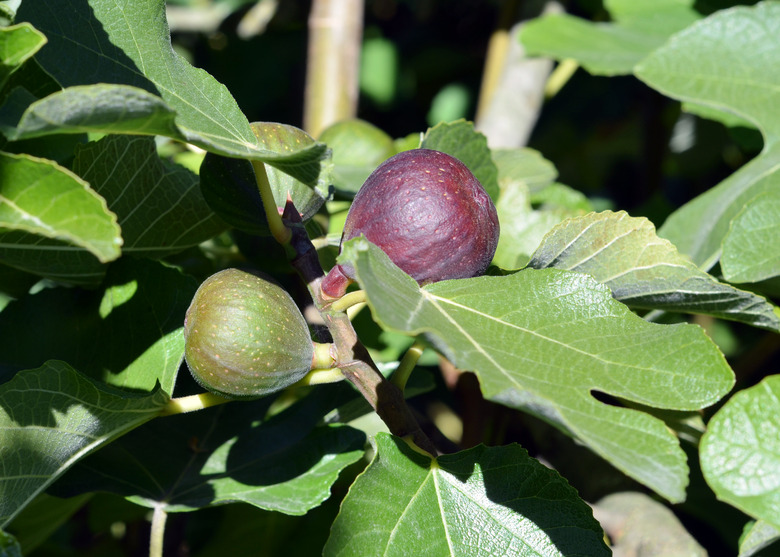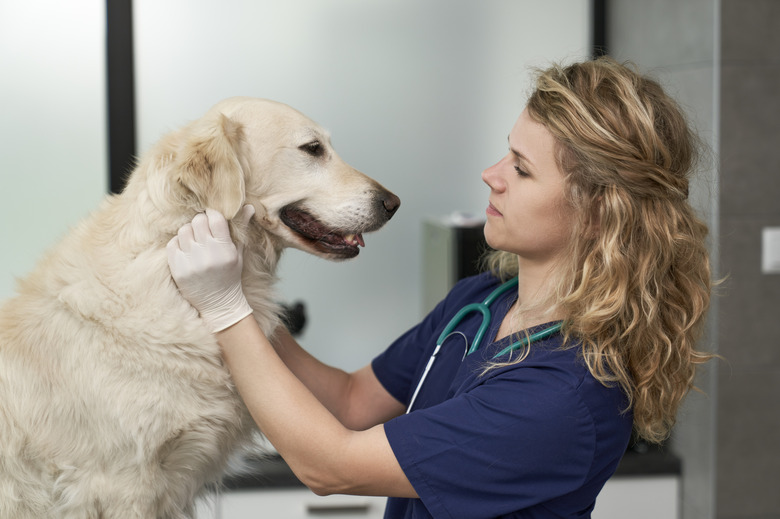Can Dogs Eat Figs? There Are Some Side Effects If A Dog Eats Figs
Do you love fruit, and do you find yourself wanting to share fruits with your dog? Some fruits are perfectly fine to offer your dog, but figs require a little more caution. While figs for dogs are generally regarded as being safe, they can cause some side effects for which you should watch. Plus, fig trees themselves could put your dog's health at risk.
Can dogs eat figs?
Can dogs eat figs?
Yes! Figs are safe for most dogs. However, keep in mind some precautions. Fresh figs offer a number of nutritional benefits to dogs, and many dog owners opt to feed these fruits to their pets. Figs contain lots of potassium, which can help dogs keep their blood pressure down.
If you're trying to get your dog to lose weight, figs for dogs can help. These fruits are filling, and just one or two figs can keep your dog's hunger at bay. Figs also contain dietary fiber, which is particularly good for dogs who have a weakened colon, are dealing with weight issues, or are at risk for diabetes.
Can dogs eat dried figs?
Can dogs eat dried figs?
No, dogs should not eat dried figs. Dried figs have a higher sugar content and more calories. The sugar becomes concentrated when the figs are dried. Dry figs have more calories and more sugar per cup than fresh figs do. According to the USDA, 100 grams of raw, fresh fig have 74 calories. The USDA says that 100 grams of dried figs has 277 calories. Raw figs have 16.3 grams of sugar per 100 grams while dried figs have 47.9 grams of sugar per 100 grams.
Can dogs eat Fig Newtons?
Can dogs eat Fig Newtons?
No, your dog should not eat Fig Newtons. Although the name might sound healthy, they aren't. Fig Newtons are a type of pastry filled with a sweetened paste of dried figs. They taste good, but they have too much sugar to be considered healthy dog treats. They aren't toxic or poisonous though.
Fig side effects in dogs
Fig side effects in dogs
Can a dog eat figs? Yes, but it is possible they may have an adverse reaction. Some dogs are particularly sensitive to these fruits and may experience unpleasant side effects after consuming them. Figs contain two enzymes called ficin and ficus. These enzymes can be too strong for your dog's stomach to handle. Keep an eye on small dogs and those who typically experience difficult bowel movements.
Dogs who eat more than a few figs at a time often have an upset stomach along with diarrhea or vomiting. Some dogs may develop rashes, sores, or inflammation on their mouth and tongue. If your dog experiences any of these symptoms, discontinue feeding them figs immediately.
You will also need to closely monitor your dog to make sure that the symptoms don't get worse. While you may be able to treat mild symptoms at home, rashes and inflammation can progress to a serious allergic reaction that threatens your pet's health. Be prepared to seek immediate emergency veterinary treatment if your dog's condition worsens.
Fig poisoning in dogs from the fig tree
Fig poisoning in dogs from the fig tree
Ingesting any part of the fig plant, including fig leaves, can lead to a serious, life-threatening toxicity in dogs. In addition to the side effects your dog may experience from eating figs, you should be aware to avoid fig trees. The fig plant itself is toxic not only to dogs but also to cats and horses. Every part of the plant should be avoided.
Fig plant leaves contain a sap that is very irritating to dogs whether it gets on their skin or is ingested. When a dog eats any part of a fig plant, the dog may suffer fig poisoning. This often happens because many people keep fig plants indoors and don't realize the risk these plants can pose to dogs.
Fig poisoning symptoms
Fig poisoning symptoms
If your dog consumes part of a fig plant, you may notice a variety of symptoms. Here are some symptoms your dog might experience from eating figs:
- Your dog may drool.
- Your dog may experience diarrhea.
- Your dog may vomit.
- Your dog may suffer from abdominal pain.
- Fig plants can also affect the skin around your dog's mouth, so they may rub their face in distress, develop irritated skin, and have watery eyes.
Fig poisoning is a serious health issue and needs to be treated as an emergency. Even if your dog is only displaying mild symptoms, you need to take them to the veterinarian for evaluation and treatment.
Treating fig poisoning in dogs
Treating fig poisoning in dogs
Your veterinarian may use a variety of strategies to treat your dog's fig poisoning. If your dog hasn't yet vomited up the sap, your veterinarian may help your dog vomit so that the toxins are no longer in their belly. Next, the veterinarian will probably give your dog activated charcoal, which will stop your dog's body from absorbing any remaining toxins.
Your dog will probably have residual sap in and around their mouth, so your veterinarian may give your dog a bath to help keep the sap from causing any further irritation. Additionally, your veterinarian will probably administer intravenous fluids to your dog. These fluids will help to keep your dog hydrated while simultaneously supporting urination and kidney function.
Health benefits if you feed figs to your dog
Health benefits if you feed figs to your dog
Figs for dogs aren't necessarily a bad thing, and figs can have some valuable nutrition benefits. If you decide to feed your dog figs, you should do so carefully and with just small bits, especially when it's your dog's first time eating this fruit. Give your dog just a small piece of fig and then monitor them for any signs of digestive system upset, constipation, or skin irritation. You can gradually work up to feeding your dog multiple pieces of fig but always feed figs in moderation as an occasional treat.
In order to keep your dog safe, never keep fig trees in your home. These trees are toxic, and even if you carefully guard them to keep your dog away from them, accidents can still happen. Instead, purchase figs or keep fig trees outdoors in a secure, fenced area that your dog cannot access.
The bottom line
The bottom line
Figs themselves are not dangerous for dogs in small amounts, but the fig leaves and bark of the fig tree are toxic. If you decide not to feed your dog figs, that doesn't mean you can't feed your dog a sweet treat of fruits full of natural sugar. Many fruits are good for dogs, and they can offer some variety and extra nutrition to your dog. Some safe, nutritious fruits include apples (without the seeds or core), bananas, blueberries, watermelon, cranberries, mangoes, oranges without the peel, raspberries, and strawberries. When introducing figs or any fruit to your dog's diet, do so slowly and in moderation.


